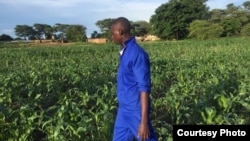Africa is home to 12 of the world’s 20 fastest-growing economies, and the continent is poised to become the world’s second fastest-growing economic region. Yet it is also one of the few regions of the world where hunger and undernourishment have continued to rise in recent years, according to Isobel Coleman, Deputy Administrator of the U.S. Agency for International Development, or USAID.
“This is a moment of great opportunity,” she said. “With smart policy reforms, and increased investment and trade, we can realize the potential of this dynamic region while seriously tackling poverty, hunger and malnutrition.”
“The U.S. government’s global hunger initiative, Feed the Future, prioritizes investments in Africa – providing more than $400 million each year to drive inclusive and sustainable agriculture-led growth, improve nutrition outcomes, and build resilience.”
Still, much more needs to be done. “As global needs continue to far outpace available resources, USAID is focused on investing our dollars in the most impactful, cost-effective ways to maximize our impact,” said Deputy Administrator Coleman.
USAID identified Malawi, Tanzania, and Zambia as countries that are ready to undergo “the kind of agricultural transformation that can lift hundreds of thousands of people out of poverty and help expand the food supply across the region and beyond,” said Isobel Coleman.
“So, through an initiative we are calling Feed the Future Accelerator, we are doubling down on our investments in these three countries. We believe these countries have the potential to become regional breadbaskets helping to feed the world.”
“In partnership with the African Union, the Accelerator will allow us to support an African-led approach to tap into that potential,” said Isobel Coleman. USAID contributed $80 million in commitments to Feed the Future Accelerator, while other U.S. government agencies pitched in $500 million in investments.
That said, the United States government is not working alone.
“The private sector is joining us in this effort, with major companies such as Bayer and ofi, one of the largest coffee suppliers in the world, investing over $150 million in Malawi, Tanzania, and Zambia.”
“This kind of partnership – with the private sector, with local African leaders, with other donors, and beyond – will be vital to our efforts,” said Deputy Administrator Coleman. “Together, we will create an engine that can help feed hungry people, not just in these three countries, but across the African continent.”














